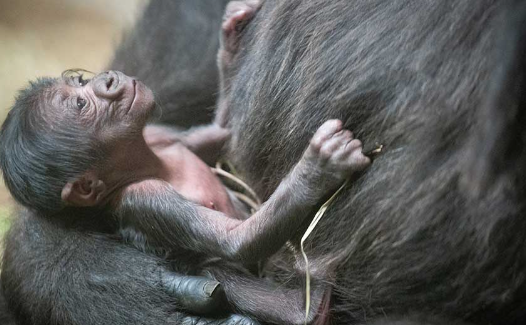How Do Gorillas React to Newborns?
Gorillas, our closest relatives in the animal kingdom, are known for their complex social structures and behaviors. Understanding how they react to newborns provides valuable insight into their social dynamics and maternal instincts. This topic is not only fascinating but also highlights the nurturing aspects of gorilla life, appealing to animal lovers and researchers alike.
Nurturing Behavior of Gorilla Mothers
When a female gorilla gives birth, her maternal instincts kick in immediately. Gorillas exhibit nurturing behavior much like humans, displaying affection towards their newborns by cradling and grooming them. The mother often keeps the baby close, offering warmth and security. This bond is crucial for the newborn’s survival, as it helps them develop emotionally and physically. Besides caring for their own infants, gorilla mothers have been observed to show interest in other infants in their group, reinforcing social bonds and community support.
Group Dynamics and Infant Interaction
The presence of a newborn can alter the social dynamics within a gorilla group. Other female gorillas, especially those without young of their own, may become particularly attentive, often mimicking the mother’s care by gently touching or grooming the infant. This behavior fosters a communal parenting approach, which is common in many primate societies. Additionally, male gorillas, or silverbacks, often take a protective role, demonstrating their strength and authority to ensure the safety of the newborn. Such interactions not only strengthen group cohesion but also teach younger gorillas about parenting and social responsibility.
Response to Newborns in Captive Settings
In zoos and sanctuaries, the reactions of gorillas to newborns can be quite interesting to observe. Caregivers often notice heightened curiosity among the group, with many gorillas closely watching the new arrival. Staff members may facilitate introductions to ensure that the youngsters feel secure while allowing other group members to engage safely with the newborn. Through these managed interactions, experts can study gorilla behavior in a controlled environment, offering insights into their natural habitats. These observations can lead to improved care techniques for both captive and wild gorilla populations.
In conclusion, gorillas exhibit remarkable maternal instincts and communal behavior towards newborns. Their nurturing and protective reactions provide a window into their social structures and emotional complexities. If you’re intrigued by the world of gorillas and want to learn more about these magnificent creatures, consider visiting a local zoo or reading further about their behaviors in the wild. Embrace the opportunity to explore the fascinating life of gorillas and their captivating responses to the newest members of their community!

